Her Secluded Lifestyle on a 14 Acre San Diego Estate with a Private Lake
by Paula Huang
original Sohu:Fashion article in Chinese
This week, Sohu Fashion [100 Succesful Lifestyles] interviews the painter, Ms. Jia Lu.
When I first looked at Jia Lu’s family photos, and listened to her friends talk about her life, I could not believe it was true.
I am still astonished after a three hour transoceanic conversation via WeChat, but what surprises me is not her material lifestyle, but the depth of her spirit, the sort of “nobility” we only read about in stories!
To preserve the original feel for her life and training, I’ve employed her own words to tell her story.
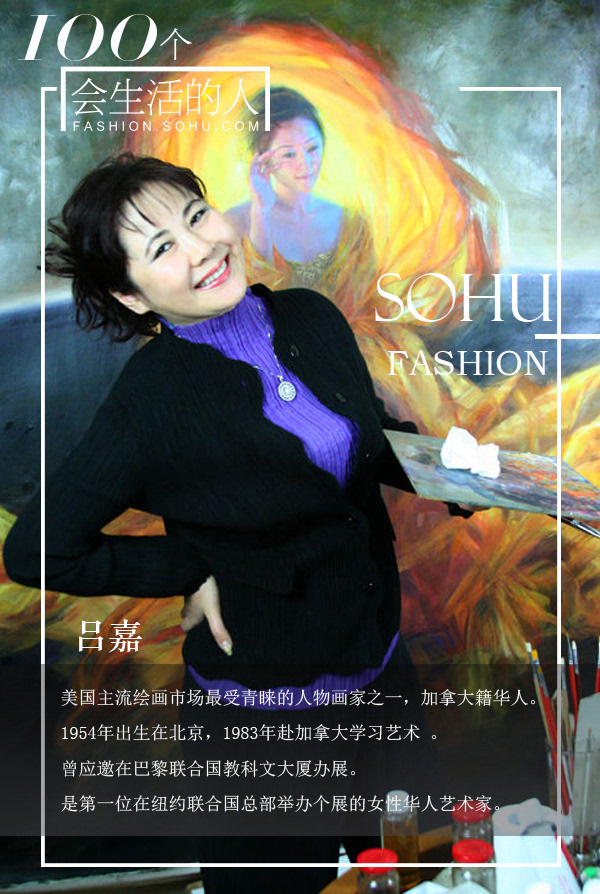
Jia Lu
One of America's best-loved figurative painters, Jia Lu was born in 1954 in Beijing. In 1983 she emigrated to Canada to continue her studies, and has been invited by UNESCO to show her work in Paris in 1999. In 2000 she was the first Chinese woman to exhibit work at the UN Headquarters in New York.

A selection of Jia Lu's art
Like Alice Roaming in Wonderland
I first saw this house four years ago when a friend asked by chance, "there is a villa with a lake for sale, have you any interest in seeing it?"
The house is located halfway up a hill valley, the former owner chose a Spanish architectural style and unique split level design. It features a collection of red clay tile gable roofs, walls of white blended with pale yellow and brightly colored details that feel warm and inviting. It is surrounded by flowers and trees and the many exposed wooden beams and columns enhance the sense of being close to nature. Twenty-three doors lead to the outside, creating an unrestricted view when they are all open.


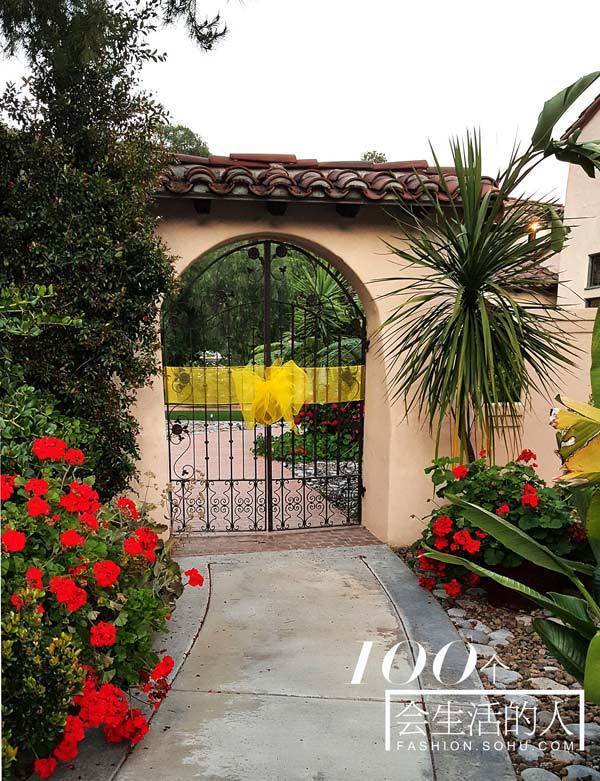
To take advantage of the lake view, the house is based on an elongated design. One entire side faces the water so the eyes are delighted by surrounding trees reflected in blue-green water.

The previous owner had lived in Morocco, so she had Moroccan blue columns, a fountain with blue tiles, gardens planted with purple morning glory and petunias, and fourteen colourful parrots in cages resting in the sun under a wisteria arbor.
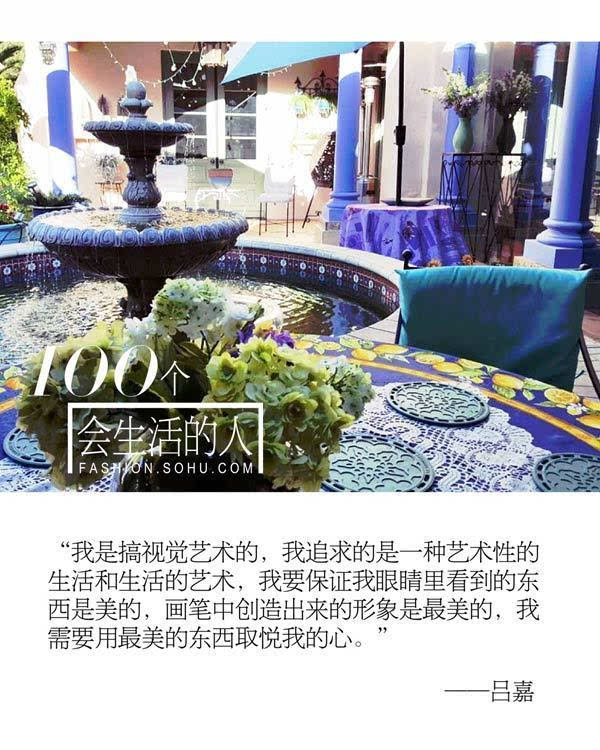
"I work in the visual arts, so what I seek is a life of art and the art of living. I want to make sure my eyes only see what is beautiful, that my brush only creates images that are beautiful. I want to be delighted by only the most beautiful things."e;
—Jia Lu
To the left of the lake is a valley with towering ancient trees, huge boulders and a creek, threaded with a path that takes you around the valley on an hour-long route like a roaming Alice in Wonderland.
My husband and I bought it without hesitation.
A Home Filled with the Sound of Water, Bird Song, and Wind Chimes
It’s not an easy caring for an estate.
The first problem we faced were irrigation pipes that had been allowed to fall into disrepair. A burst pipe might leak a thousand dollars worth of water overnight. It took two years to replace all the old pipes with new ones.
The surrounding valley was dark as pitch when we first moved in, so we had electricians install outlets and LED lights around the lake and gardens, so there are points of light in the darkness now.
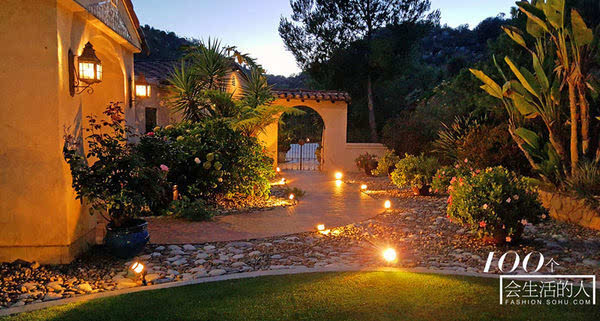
I also took up my old line of work and designed a Japanese garden, a small tea kiosk, a Japanese-style fountain, hung wind chimes, and planted bamboo. As you pass through the gate, the western-style surroundings give way to an oriental feel.
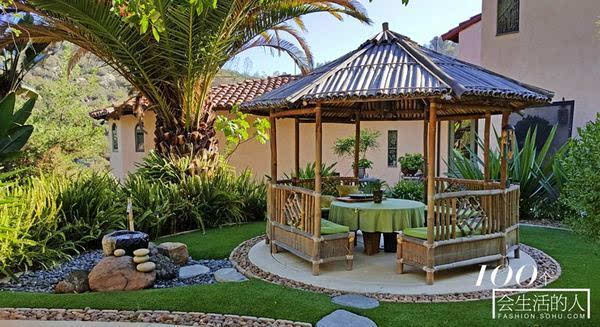
At dawn you see an otherwordly view: a veil of mist hangs over the lake and clouds are chased by the breeze. As the sun rises and the mist dissipates, you see groups of cormorants, egrets and ducks on the surface of the lake. There are more than a hundred koi leaping in the waters, and dozens of Brazilian turtles sunning on the shore.

We have a variety of birds, hummingbirds more than any other kind, that visit every day to drink sugar water from the many feeders I hang around the house.
The villa has several gardens, so to ensure flowers open all year round, I have had to learn a lot of gardening knowledge, not to mention skills like pruning roses. Over the last four years, we have completed more than 80 large and small projects around the house. I often joke with my friend: "The property is like a difficult lover, you spend all your effort on her, and though you often want to break up, it’s impossible: she’s just too charming."
Friends keep telling us: "you have the most beautiful home in all San Diego County. You can sit every day and listen to the sound of water, birds and wind chimes; you smell the flowers, feel the sun, look at the lake, drink tea, write and draw… what more could you want?"
Indeed once I am home I almost never go out.
Positive Associations, Friendly Greetings, Gratitude and Praise are the Pillars of Her Happiness
By living in such a home, I try to ensure I am surrounded by beautiful things and only use beautiful objects.
For example the tablecloth, plates and napkins on which I eat my breakfast must be deep azure and spring green. The table must be dressed with a bouquet of lemon, lavender, violet, and sunflower. The Provençal colours remind me that today I will be happy!
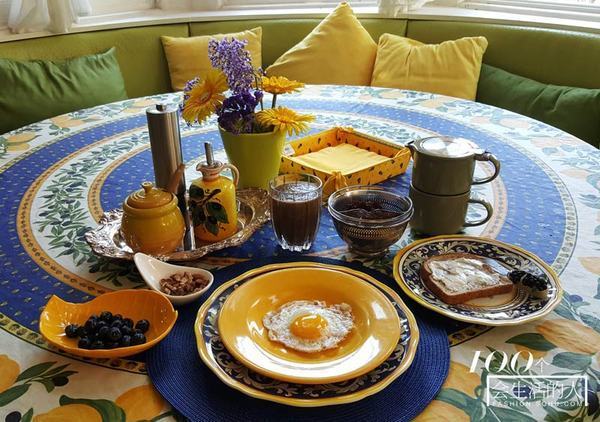
I also have my own dress code. Because we live in the country, and I want my guests to feel that I match my surroundings, so my wardrobe emphasizes natural fabrics and colours. I generally wear linen: fine linen to meet guests and coarser linen to wear at home, mostly in white, coral, yellow, light green or tan, to complement my home.
Happiness doesn’t just happen: you have to create it, so positive associations, polite greetings, expressions of gratitude and praise are the magic keys to my happiness.
The first thing I do every morning is to rush into my bathroom, turn to the big vase of golden sunflowers on my counter and say: "Jia, you wish to be happy! Everything you do today must make you happy."
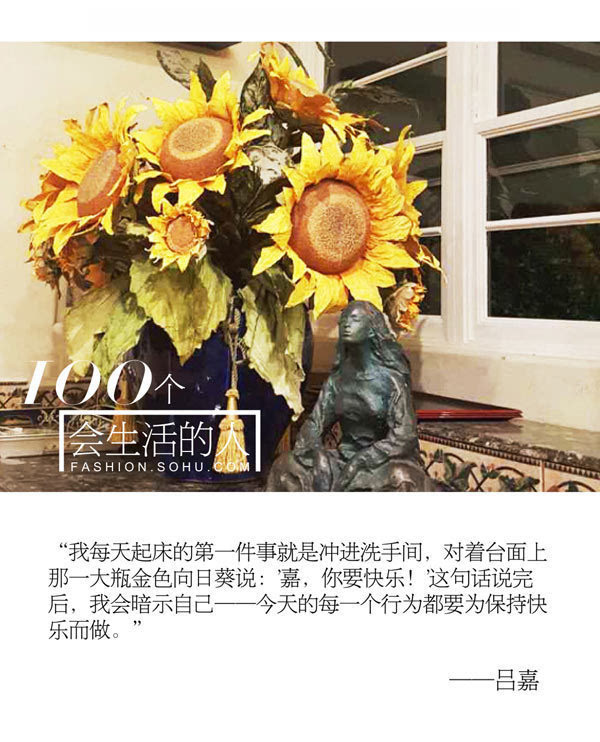
"The first thing I do every morning is to rush into my bathroom, turn to the big vase of golden sunflowers on my counter and say: "Jia, you wish to be happy!" With that I remind myself, everything I do today must be done to preserve my happiness."
—Jia Lu
I say "good morning" to my husband every day, and if I have guests staying, I'll say hello to each of them.
To whomever pours me a cup of tea or does any little favour for me, I will always say "thank you".
On the way from my bedroom to my breakfast nook I pass a courtyard garden with a fountain, a purple colonnade, and a variety of flowers. Some flowers I planted to remember friends who have passed away, and every day I spend some time to talk with them, call out their names, kiss their leaves and praise their beauty. Amazingly, they grow larger and more beautiful than all the rest.
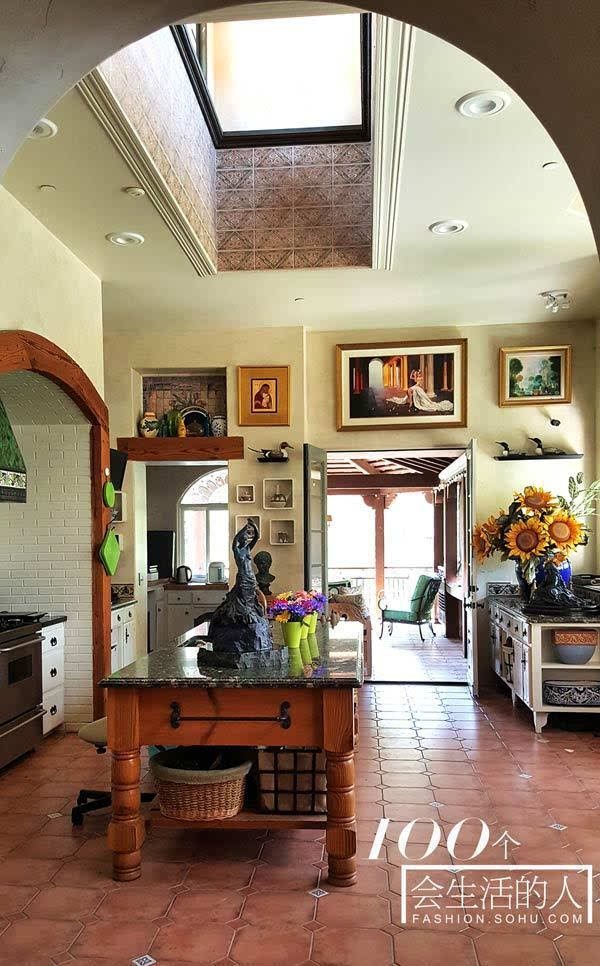
(Interior view of Jia Lu's home)
Nothing is done to show off, I'm just trying to pursue the lifestyle I want — I work in the visual arts, so what I seek is a life of art and the art of living. I want to make sure my eyes only see what is beautiful, that my brush only creates images that are beautiful. I want to be delighted by only the most beautiful things.
How She Keeps Going: A Balanced Life and Endless Study
My breakfast is twenty different vegetables, fruits and nuts, blended at high speed with two slices of lemon, then poured into a large glass. It’s very healthy.
For lunch I’ll eat a sandwich with meat and vegetables or Thai food.
For dinner we will go out to eat organic, Chinese, Japanese, Korean, Vietnamese, French, Middle Eastern, or Indian cuisine … something different every day, but with a carefully calculated daily balance of nutrients.
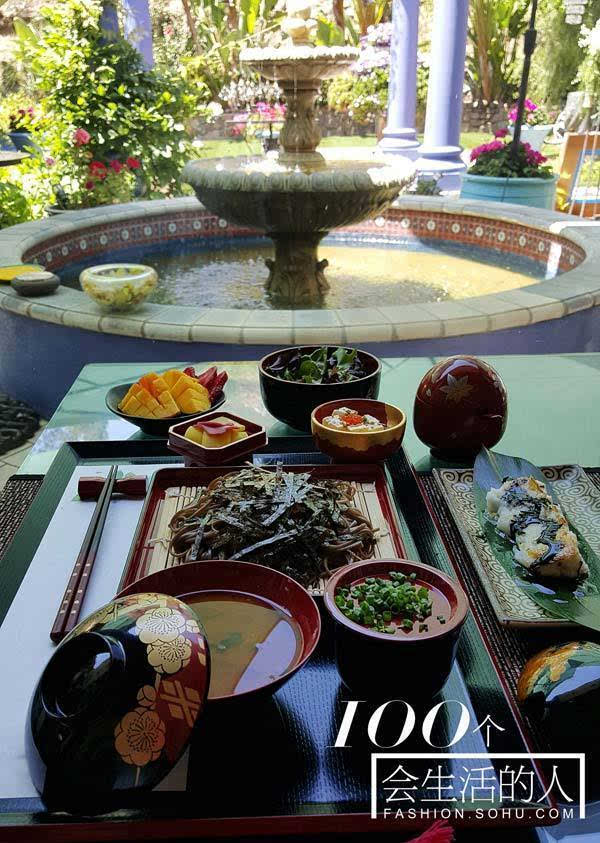
(Japanese-style lunch made by Jia Lu)
I am also particular about what I drink. In the the morning I generally take herbal tea, Longjing, Japanese mocha or green tea; in the afternoon, red tea or black tea; and a fruit tisane in the evening.
I do my chores in the morning, and paint in the afternoon.
No matter how busy, learning is an essential part of my day. I download courses to my phone, including science, history, humanities, philosophy, and psychology, and work while listening to lectures. At night I may turn on the television to watch the History Channel, the Science Channel, or enjoy films with strong intellectual or artistic ideas.
How Her Afternoon Teas Have Rescued Many Friends
After moving to this valley I have entertained ten times as many visitors as I had when living in the city. Friends appear willing to spend two hours on the road coming to our house. The main attraction is the environment, and then there are my afternoon tea salons.

In 1984, when I first came to Canada I was but a poor student living in a 100 square foot rented apartment, but I bought an expensive Chinese tea ceremony set made in Taiwan, and spent two hours every Saturday learning the tea ceremony, then invited my teachers and classmates to my home for tea, and to talk about art history.
Over the last thirty years, I have kept this habit of drinking afternoon tea. I find that whenever I am troubled by something, I have only to invite friends to take tea with me, and my mood will change for the better. Having discovering this way of making myself happy, I want to share it with all my friends.
One day two years ago, I invited seven or eight girlfriends over to have tea. They didn’t have anything appropriate to wear, so I made some hats and helped them to dress up. They were very happy. Since then, afternoon tea parties have become a part of my lifestyle.
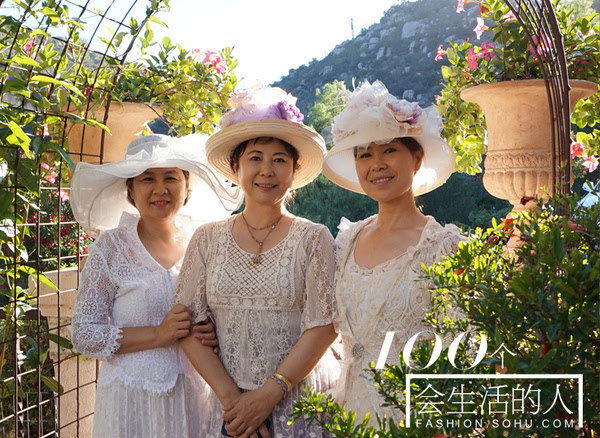
Each tea party must be prepared well in advance. For example on May 28 we will hold an afternoon tea salon on an English Edwardian theme. My husband is researching the correct etiquette and will be responsible for telling us about "The Gentleman: His History and Philosophy." I have spent weeks helping my guests to select dresses and costumes, some of whom have bought vintage frocks from the 1900s.
I have a preparatory team, who are girlfriends initiated at earlier parties. We discuss the colour of the table settings, how to place tables and chairs, and decide on what snacks to serve and the appropriate teas to match them.
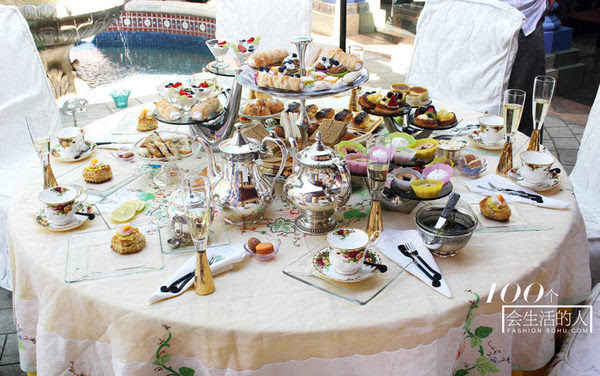
When guests come to my home, I first present them with a cup of blue butterfly tea brought from Thailand that matches the colour of the columns in my courtyard. I also give each of them a slice of lime, which when squeezed into their own cups turns the tea to a purple colour, matching the flowers in my garden. With this small gesture I want them to realize a dream-like transformation is about to take place.
We will then change into costume following the theme of the day, and together we turn into perfect ladies and gentlemen.
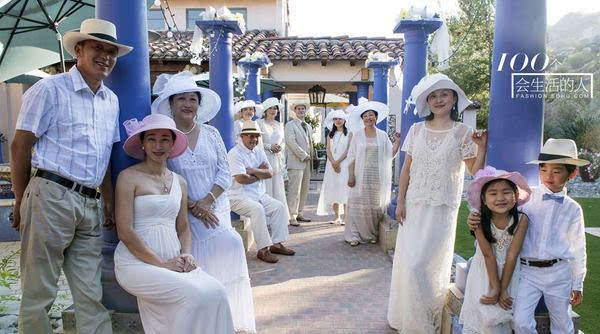
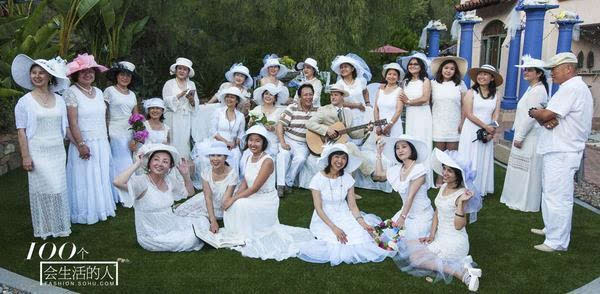
Our afternoon teas strictly adhere to traditional behaviour - no discussion of money, negative news, or gossip is allowed. We put our phones away. We only talk about friendship, art, and interesting little aspects of life. And tea is poured personally by me as hostess or by my girlfriends.
Over the past two years I have invited several hundred people to my tea parties, including owners of traded companies, film stars, politicians, ordinary folk working here in the U.S., their housekeepers and drivers, and many people just arrived in America whom I do not know well.
A friend who manages a nearby farm, but today is dressed like a Greek goddess, will cut avocados for everyone else, which we all eat with great joy as she answers all manner of culinary questions posed by the group, a group that might include a newly made billionaire: this is a scene you might easily see at my tea parties. For that afternoon there is no distinction between high or low. This is the first requirement of "nobility" -- to respect each and every person.
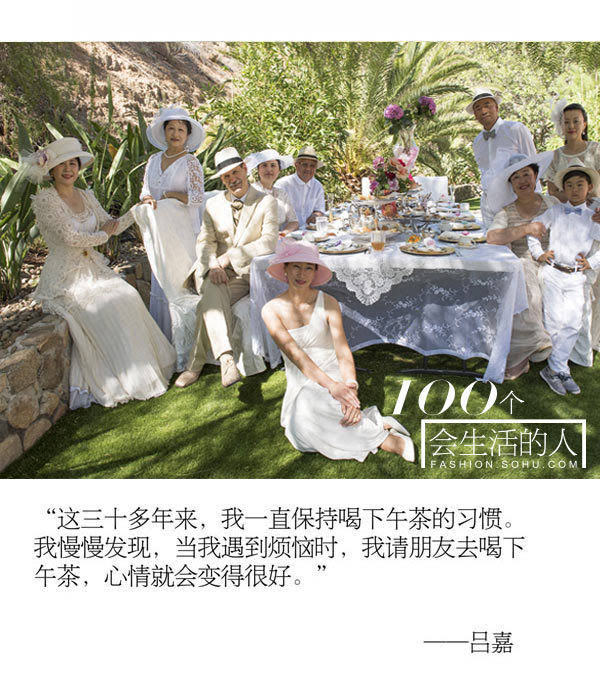
Over the last thirty years, I have kept this habit of drinking afternoon tea. I find that whenever I am troubled by something, I have only to invite friends to take tea with me, and my mood will change for the better.
—Jia Lu
Every time I hold an afternoon tea, I am involved in every aspect from preparation to cleaning up. By the end I am completely exhausted and bedraggled but it makes me very happy, because my tea parties have helped many people.
Many visitors who arrive in the U.S. are lost and bewildered by culture shock. I teach them how to order at a restaurant, how to communicate with others, how to dress well ... afternoon tea becomes for many a first window onto Western culture.
Some of my guests have lived in the United States for many years, but work every day and have no chance to know what it means to be a lady. Then they come to tea, slip into another age, sit in our beautiful surroundings, and immediately become lady-like and refined.
Afternoon tea has also "saved the life" of some friends. One friend was going through depression caused by menopause. She gave her own party clothes away to her daughter, stopped going out, basically gave up on life. But since she began taking tea at my home, she rediscovered the desire to live, began to see people again, redecorated her home, and began dressing well and making up her face, and very slowly took a new interest in life.
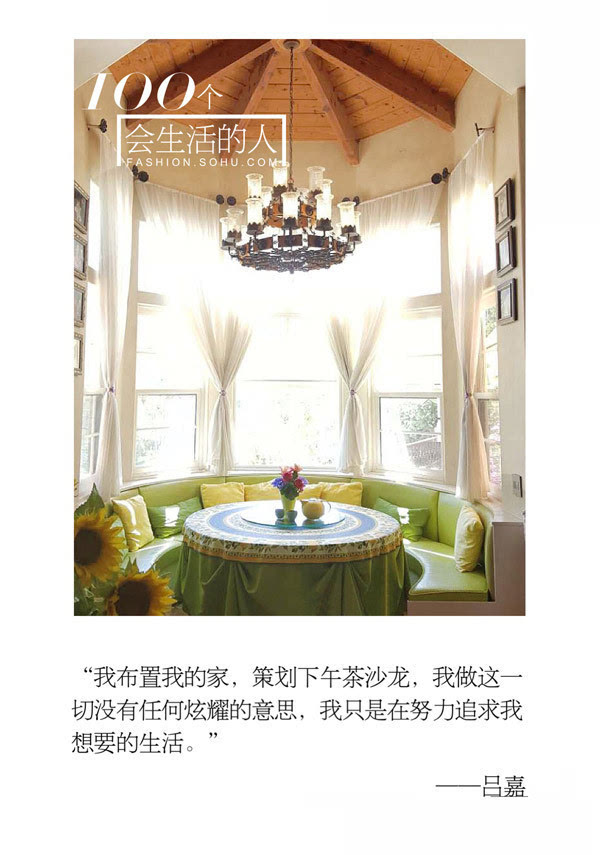
"In decorating my home, planning my tea salons, nothing is done to show off; I'm just trying to pursue the lifestyle I want."
—Jia Lu
In addition to our afternoon tea, my husband and I also founded a "Renaissance Faire" Art Salon group with friends. At Christmas we also invite friends who have just arrived in the United States to join us in a very traditional Christmas dinner, so that they feel at home even if they have just stepped off the aeroplane in a new country.
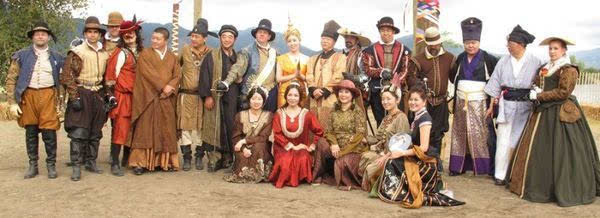
(Jia Lu and her husband dress up their friends at the Renaissance Faire)
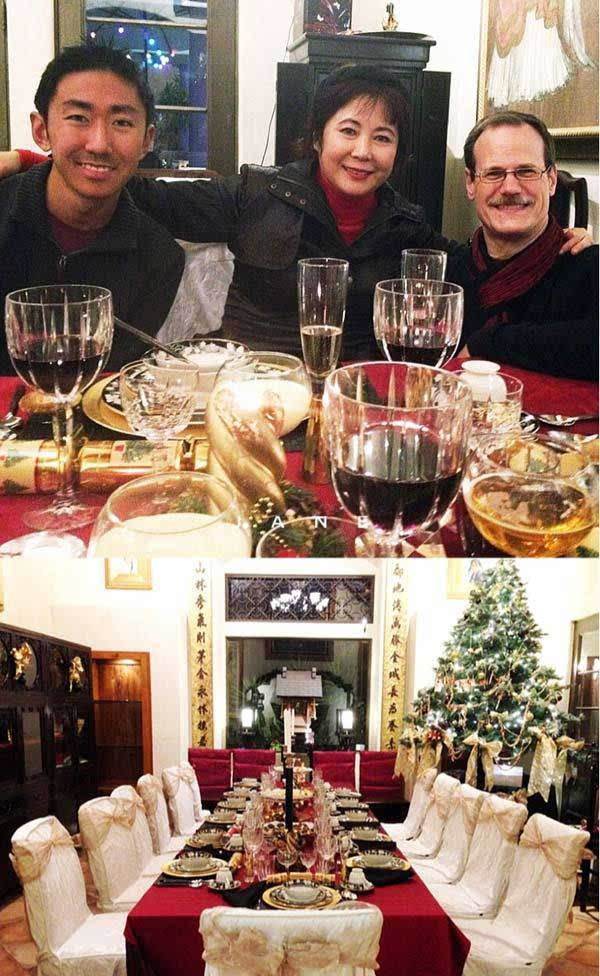
Respect yourself, respect others, be willing to share, but also seek to make yourself and others happy - this is the lifestyle toward which my husband and I strive.
Interviewer’s Afterword: Nobility has Nothing to do with Wealth
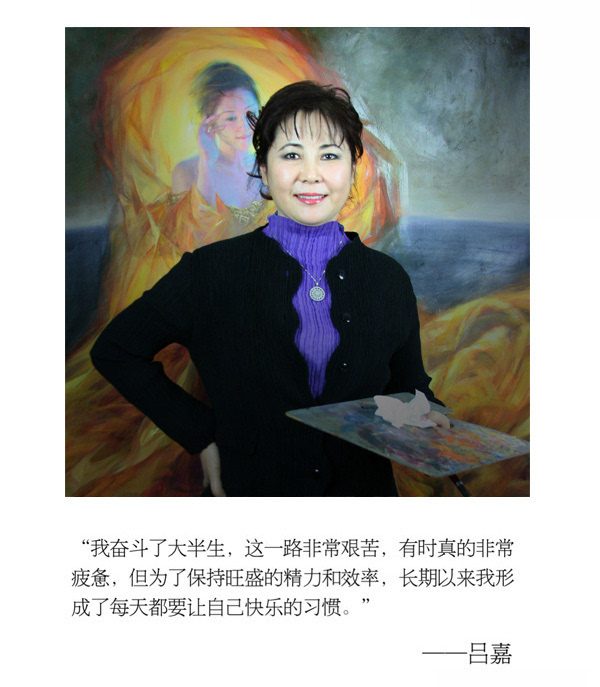
"Most of my life has been a struggle along a difficult road, and it often exhausts me, but to stay energetic and efficient, I have long made a habit of allowing myself to be happy every day."
—Jia Lu
While chatting with Jia Lu, one senses the delight she takes in others, her concern for nature and for life, and her selfless desire to help both those she knows and the strangers she encounters, as well as her deep sense of her role as hostess and her responsibility toward society. That "nobility" is expressed in her every word; it's a quality that has nothing to do with wealth or money.
Jia Lu’s ability to attain these qualities is clearly related to her family's influence (her father is the well-known Chinese artist Lu Enyi), to the thirty years she has lived in the West, and to her husband, a scholar of Chinese and Western culture. These are particular to her own circumstances.

(Jia Lu and her husband)
But her ability to find happiness and to make others happy is something we all can learn from. "Most of my life has been a struggle along a difficult road, but to stay energetic and efficient, whether as a poor student, or bogged down after my first unhappy marriage, I have persevered to remain happy. No matter how poor, I will buy a little something that delights, with brilliant colours that remind me to stay joyful, and to keep striving onward until I see the sun." This is how Jia Lu has found happiness, and it’s worth sharing.